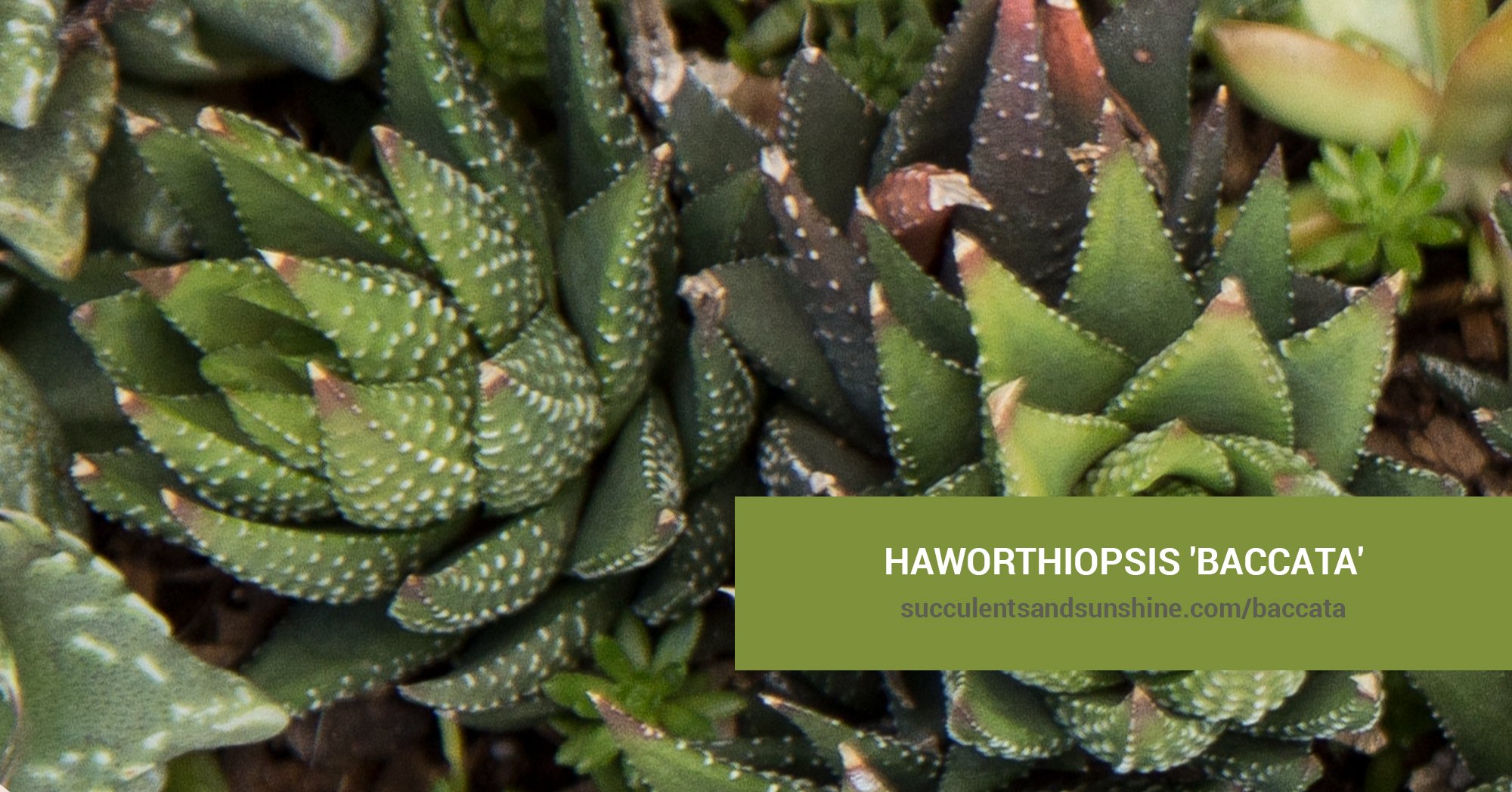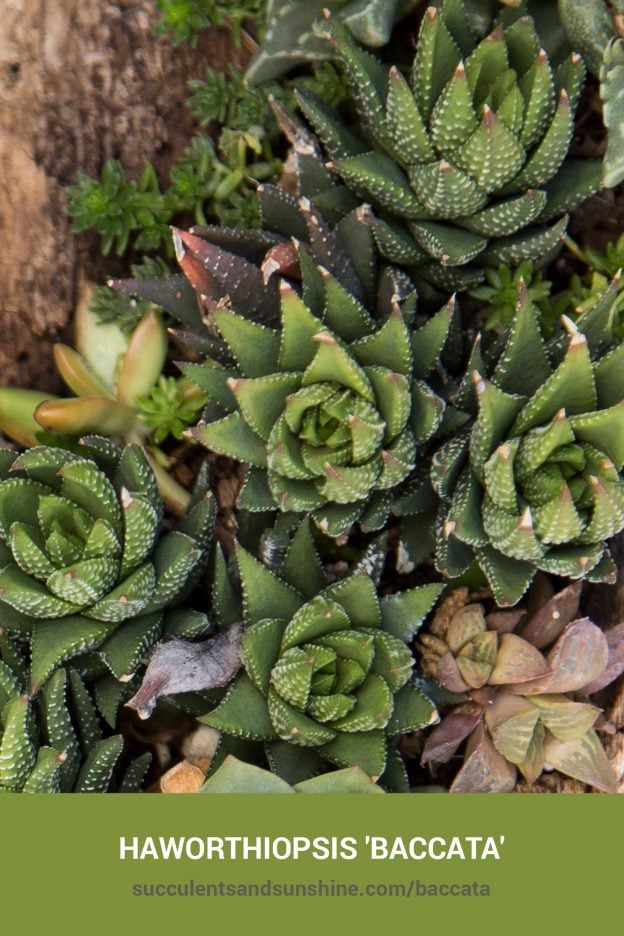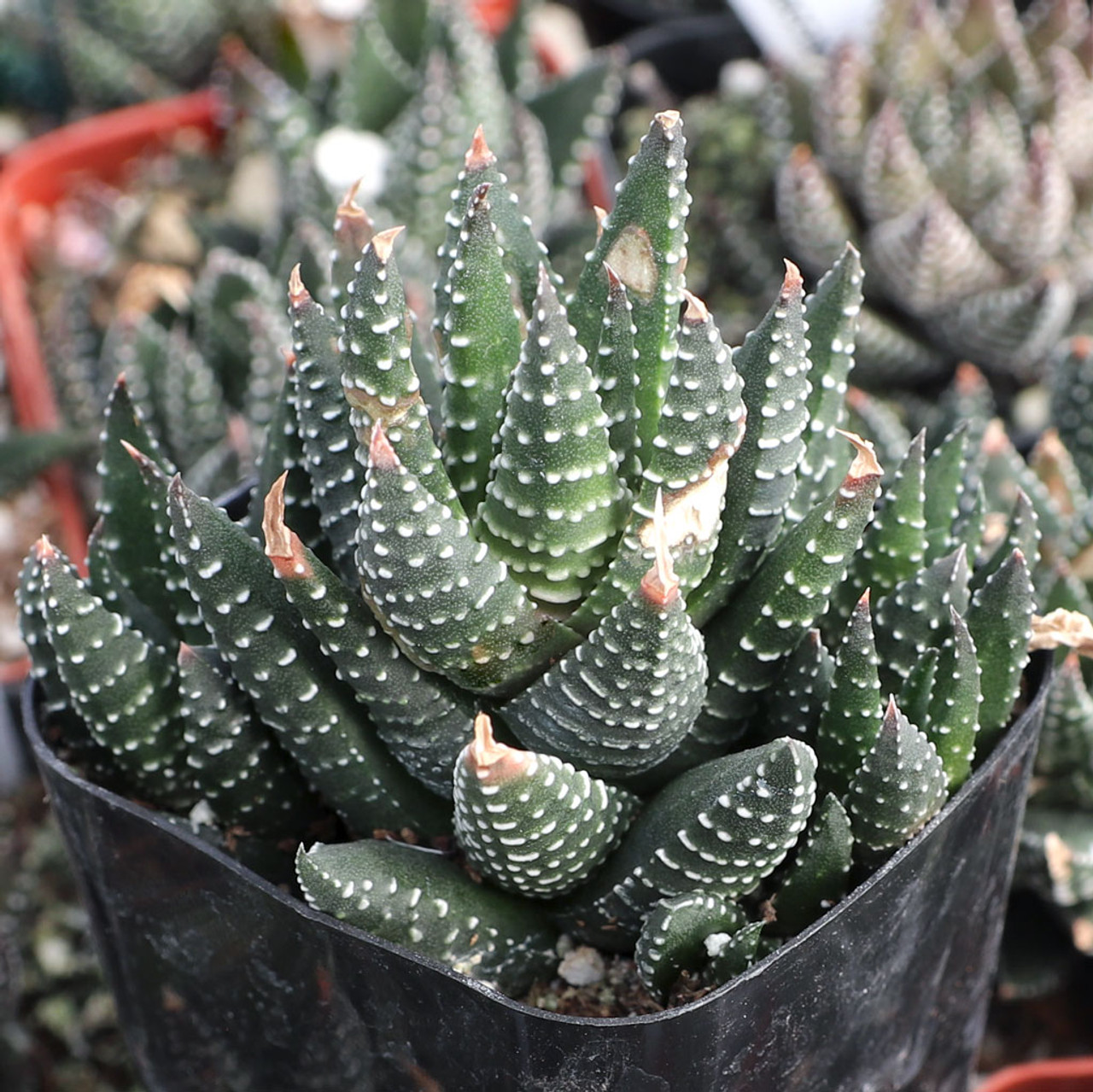This petite, dark green succulent has an upward-facing rosette that is compact and rounded. The leaves are triangular in shape and have light green or white raised bumps on the exterior.
Table of Contents
Care and Propagation Information
Haworthiopsis ‘Baccata’ (formerly known as Hawhorthia baccata) is a succulent that prefers shade and when it grows, it produces offsets that create clustered piles.
Watering
Haworthiopsis ‘Baccata’ needs to be watered following the “soak and dry” method. Allow the soil to dry out completely between waterings, as this is typical for this type of succulent.
Where to Plant
Haworthiopsis ‘Baccata’ may not tolerate cold temperatures below 30° F (-1.1° C), so if you reside in a colder region, it’s best to grow this succulent in a pot that can be brought indoors during the winter. Place it in an area of your garden that gets bright, but indirect, sunlight.
How to Propagate Haworthiopsis ‘Baccata’
Haworthiopsis ‘Baccata’ can be propagated by taking offsets from the mother plant.
Offsets
To propagate ‘Baccata’, begin by taking a sterile, sharp knife or pair of scissors and cutting off one of the offsets from the main plant. Next, leave the offset to dry and form a callous over several days. Finally, plant the offset in soil that drains well.
Care and Propagation Information
General Care for Haworthiopsis ‘Baccata’
Watering
Haworthiopsis ‘Baccata’ needs to be watered following the “soak and dry” method. Allow the soil to dry out completely between waterings, as this is typical for this type of succulent.
Where to Plant
Haworthiopsis ‘Baccata’ may not tolerate cold temperatures below 30° F (-1.1° C), so if you reside in a colder region, it’s best to grow this succulent in a pot that can be brought indoors during the winter. Place it in an area of your garden that gets bright, but indirect, sunlight.
How to Propagate Haworthiopsis ‘Baccata’
Haworthiopsis ‘Baccata’ can be propagated by taking offsets from the mother plant.
Offsets
To propagate ‘Baccata’, begin by taking a sterile, sharp knife or pair of scissors and cutting off one of the offsets from the main plant. Next, leave the offset to dry and form a callous over several days. Finally, plant the offset in soil that drains well.
FAQ
How do you care for Haworthia baccata?
If there is bright sunshine during a hot afternoon, give the plants some shade. Make sure to keep the top inch of soil moist by watering when it dries out. Do not water too much to prevent overwatering, but ensure the soil does not get dry. Plant in soil that is sandy, well-draining, and neutral, and the best time to do this is during the spring or early summer.
How do you care for haworthiopsis baccata?
Sunlight: Place in bright, indirect to direct light for optimal growth.
Water: Water every two to three weeks, allowing the soil to dry out between waterings.
Humidity: No need to worry about humidity levels.
Temperature: Keep it at an average home temperature of 65°F to 75°F.
Size: Reference product for size information.
Common Problems: Refer to product for common problems.
Precautions: Read product instructions for precautions.
How do you take care of Haworthias in the winter?
Place them in an east-facing window for the best results. Temperature & Humidity: Haworthia do well in temperatures between 65 and 75 degrees Fahrenheit. They don’t need extra humidity, but occasional misting will help keep them from drying out. Soil: Use a well-draining soil that is specifically made for succulents.
To properly care for a Haworthia, water the plant when the soil is completely dry and its leaves start to curl, typically every two to three weeks. During winter, water much less – once every other month should suffice. Place the plant in an east-facing window for the brightest, indirect sun. The ideal temperature range for Haworthia is 65-75 degrees Fahrenheit. Humidity isn’t necessary, but misting the plant occasionally will help keep it from drying out. Use a succulent-specific, well-draining soil for the best results.
Do haworthias need full sun?
Haworthias are well suited to living in the lower light conditions often found in the home since many species are adapted to thrive in partial shade, even though they look their best with some direct sun or bright light. Although some can be found in full, bright sunlight, many prefer more sheltered spots.
Can Haworthia grow indoors?
Haworthias prefer dry and bright conditions in the wild, and are able to tolerate partial shade from rocks or other plants. When kept indoors, they should be placed in an area with temperatures between 75 and 90°F and preferably in bright indirect light for the best color and blooms. However, they can also tolerate low-light placements.



